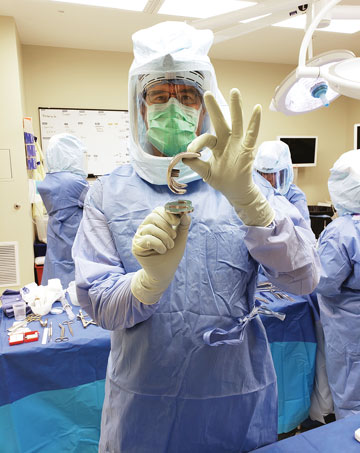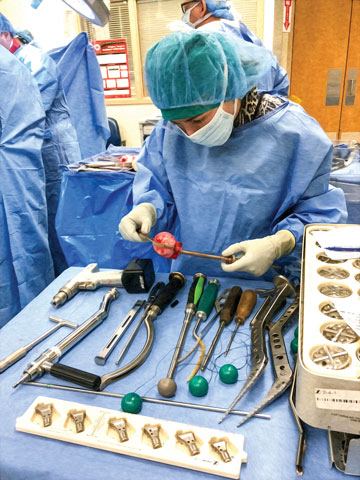Total joints are a hot specialty and orthopedic vendors want a piece of the action. Leveraging your facility’s current case volumes and the expected explosive growth of future demand to deal exclusively with a select few companies is a smart business strategy.
Look no further than Twin Cities Orthopedics (TCO), an independent practice with multiple locations throughout Minnesota and western Wisconsin. In 2012, leaders of the group’s fledgling total joints program made the game-changing decision to limit its implant and instrument purchasing to just two vendors. The arrangement, known as a dual-source agreement, paid off in a big way. “At that time, the move yielded us a pricing improvement of about 20 to 30 percent,” says Aaron Johnson, chief executive officer at TCO.
The group consolidated vendors to help grow its business, and last year did nearly 2,000 total joint procedures in its EXCEL program. At that volume, an all-play model yielded even better pricing than the dual-source agreement, which is why TCO returned to a traditional bidding model.
Granted, many outpatient total joints programs don’t have that type of volume. “From a cost and reimbursement standpoint, facilities that perform 200 to 300 cases a year benefit significantly from a consolidated vendor model,” says Mr. Johnson. “The move puts them in a position to make their program more successful.”
Pricing discounts are a primary motivator for consolidating suppliers, but there are plenty of benefits you can’t quantify. For instance, says Mr. Johnson, working with only four or five vendors — as opposed to a half dozen or more — significantly reduces the number of instrument trays at your facility, which in turn streamlines the operations of your sterile processing department and saves your facility precious storage space.
If you’re considering consolidating total joints suppliers, it helps to look beyond the traditional transactional relationship where both parties are focused solely on negotiating costs. “Consolidation establishes a true partnership between you and your vendor,” says David Uba, MBA, the CEO of Buffalo Surgery Center in Amherst, N.Y. “As the relationship grows, you’re discussing the many value-added services they offer.”
When you partner with a preferred vendor, says Mr. Uba, you’re also getting access to educational content, rebate programs and even opportunities to purchase capital equipment through various vendor-run programs. Thanks to a single-source vendor arrangement, Mr. Uba was able to procure a navigation system his total joint surgeons requested. “He used the system at a local hospital, and wanted our center to add it, which would help convince him to bring in cases on a consistent basis,” says Mr. Uba. “The vendor we worked with exclusively got creative and found a way to help us add the platform.”
.svg?sfvrsn=be606e78_3)


.svg?sfvrsn=56b2f850_5)